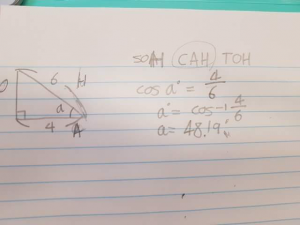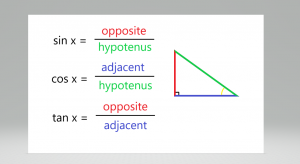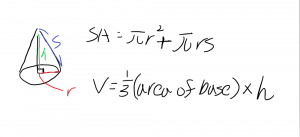
What I learned in math class in the fifth week is about the measurement. It even starts measurement unit, so we learned about the basic measurement this week. There are a lot of units, for examples, meter(m) and liter (L), and it can get other definition if we add some alphabet on the measurement.
The positive exponent measurements are da, h, and k. da means ×10, h means ×100, and k means ×1,000. There are even negative exponent measurements that are d, c, and m. d means ×1/10. c means ×1/100. m means ×1/1,000. The measurements are memorized by king henry d(a)oesn’t drink chocolate milk.
There are even bigger and smaller exponent measurements. M means ×1,000,000. G means ×1,000,000,000. µ means ×1/1,000,000. n means ×1/1,000,000,000






